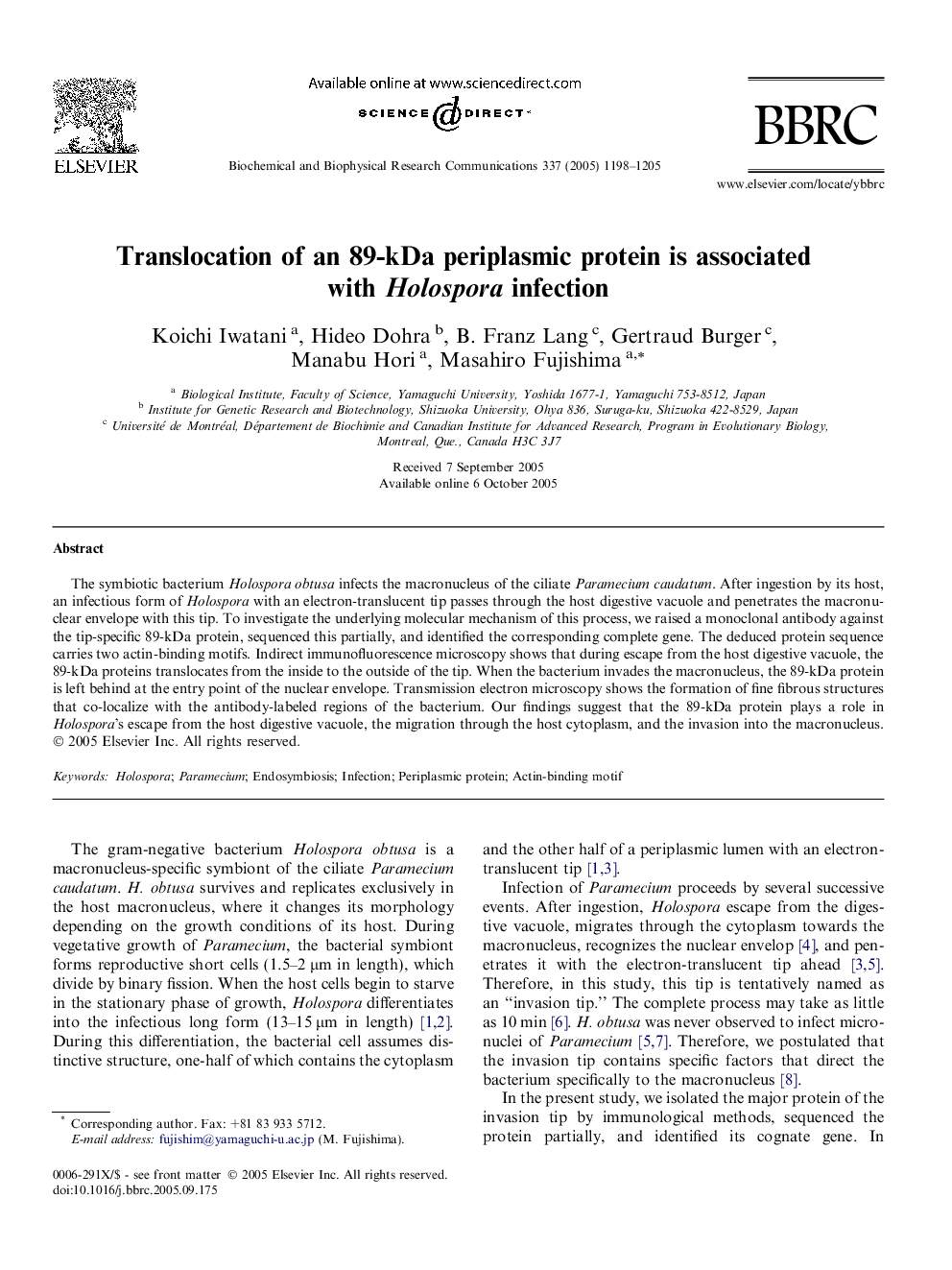| Article ID | Journal | Published Year | Pages | File Type |
|---|---|---|---|---|
| 10769124 | Biochemical and Biophysical Research Communications | 2005 | 8 Pages |
Abstract
The symbiotic bacterium Holospora obtusa infects the macronucleus of the ciliate Paramecium caudatum. After ingestion by its host, an infectious form of Holospora with an electron-translucent tip passes through the host digestive vacuole and penetrates the macronuclear envelope with this tip. To investigate the underlying molecular mechanism of this process, we raised a monoclonal antibody against the tip-specific 89-kDa protein, sequenced this partially, and identified the corresponding complete gene. The deduced protein sequence carries two actin-binding motifs. Indirect immunofluorescence microscopy shows that during escape from the host digestive vacuole, the 89-kDa proteins translocates from the inside to the outside of the tip. When the bacterium invades the macronucleus, the 89-kDa protein is left behind at the entry point of the nuclear envelope. Transmission electron microscopy shows the formation of fine fibrous structures that co-localize with the antibody-labeled regions of the bacterium. Our findings suggest that the 89-kDa protein plays a role in Holospora's escape from the host digestive vacuole, the migration through the host cytoplasm, and the invasion into the macronucleus.
Related Topics
Life Sciences
Biochemistry, Genetics and Molecular Biology
Biochemistry
Authors
Koichi Iwatani, Hideo Dohra, B. Franz Lang, Gertraud Burger, Manabu Hori, Masahiro Fujishima,
